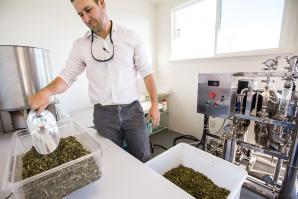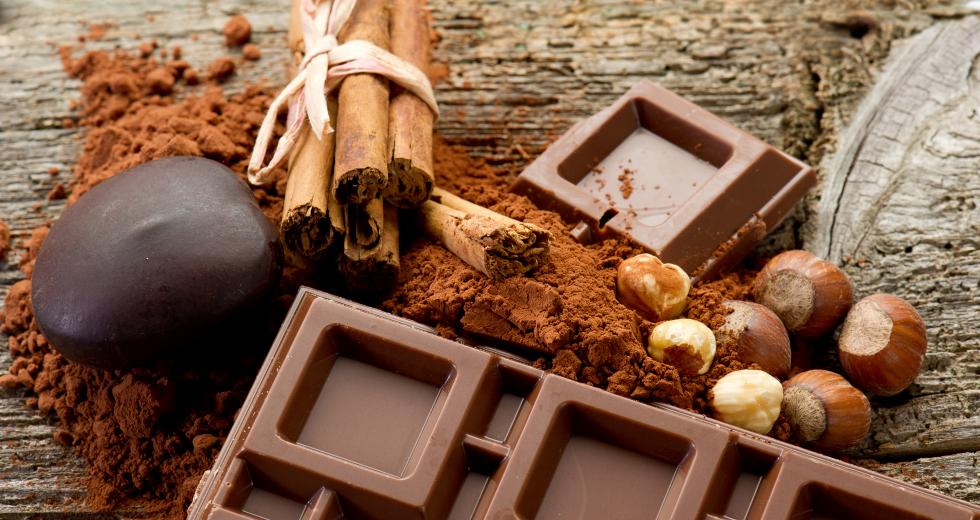Whether it is a steaming mug of cocoa on a rainy afternoon, the next day’s reward from an advent calendar or chocolate coins wrested from the clutches of a reluctant nutcracker, few sweets embody the holidays like chocolate.
But this year, the threat of a global cocoa shortage threatens to put a damper on the good tidings and cheer, as worldwide demand for chocolate outstrips the waning production in the Ivory Coast and Ghana, which produce more than 70 percent of the world’s mass-market cocoa.
Drought and disease have ravaged cocoa production in West Africa, accounting for a drop of more than one-third of production. Since January 2012, cocoa prices have jumped from an average of just north of $2,300 per ton to more than $3,100 per ton in October 2014, according to the International Cocoa Organization.
Locally, however, Sacramento’s premier chocolatiers, confectioners and retailers have yet to see the effects from the shortfall.
One reason for this is that the region’s top vendors are using better chocolate and on a much smaller scale than national and international operations.
Ginger Hahn is a renowned North American chocolatier with a self-professed “crazy obsession with pastry” and co-owns Ginger Elizabeth Chocolates. Hahn crafts her confections from combinations of 15 different chocolates primarily procured from French company Valrhona in the Rhone Valley, home to much of the world’s finest cocoa.
“We get chocolate from some of the best beans in the world,” Hahn says. “We’re already paying top dollar for the best.”
Her methods are scientific: Hahn uses a program developed by her husband and business partner to calculate different variables in ingredients for her complicated and time-consuming recipes.
Still, Hahn’s operation — heralded as one of the region’s very best — is small enough that tectonic shifts in the global landscape have little effect as of the end of 2014.
“When you’re producing millions of Snickers bars, one penny is going to be a big problem,” Hahn says. “But when we go up even 10 cents per pound, we’re so small it just doesn’t affect us.”
Chocolate is one of the world’s oldest sweets, dating back over 3,000 years, and was a favorite of the Aztecs. It has a long history in California in particular, when during the Gold Rush world-class chocolatiers Dominbro Ghirardelli and Etienne Guittard set up shop in the Golden State in the mid-19th century.
Today, chocolate is still the go-to when it comes to gourmet desserts.
“[Chocolate] has a more elegant, luxurious connotation,” says Andy Paul, owner of Andy’s Candy Apothecary. “Most of the time when [consumers] think grown-up desserts, they think chocolate.”
Paul’s company aggregates the best candies from around the country and shops them in a boutique-style storefront.
Because demand during December is intensified — Paul estimates his company will make 25 to 35 percent of its entire year’s sales in the three week holiday period — he has to order stock from distributors six months in advance.
As a result, he says, any changes in the market would not be felt until at least the next fiscal year.
Most of the small businesses and producers from whom Paul buys sell Central American cocoa products that are more often fair trade certified than their West African counterparts, he says.
Around 60 to 70 percent of Paul’s products contain cocoa in some form. He says the demand for chocolate increases exponentially during November and December “because it meets people’s vision of what’s fancy” for the holiday season.
“And to an extent that’s true,” Paul says. The average person likely isn’t going to gift their beau a box of gourmet gummy bears for their anniversary or take a basket of the finest sour sticks to a holiday party, though such candies do exist and are can be just as luxurious as chocolate.
But that’s not what people want when they are think premium, fancy sweets.
People want comfort, warmth, familiarity. And as Hahn sets to roll out her seasonal specials — peppermint hot chocolate, holiday yule logs, eggnog truffles — chocolate is the common thread that weaves through them all.
That speaks to why any threat to the global chocolate supply shakes consumers and businesses alike to the core: There is much more to chocolate than a simple sugar high.
And while ‘tis the season to indulge, for how much longer no one can really be sure.
Recommended For You

3 Ways Coffee Shops Boost Your City
The economic and urban impact of your morning latte may surprise you
Our local coffee roasters have been putting Sacramento’s coffee scene on the map. While roastery fame is an exciting addition to our Farm-to-Fork movement, it’s not the only way our local cafes are having a positive impact on our city. They also help…

Women Mean Business
Female-owned businesses create more jobs
For business owner Ginger Hahn, her eponymous Sacramento chocolate shop is about more than sweets. It’s about freedom.

The Cupcake Skinny
Will the confectionary craze last?
If there’s anyone more excited than a kid in a candy shop, it’s a middle-aged woman in a cupcake shop. The national cupcake craze also has hit all regions and demographics, according to those in the bakery industry.

Sugar & Splice
The Capital Region offers everything nice for ag-bio companies like Stevia First
A Capital Region startup is striving to be among the first in the nation to produce the zero-calorie, natural sweetener stevia on an industrial scale. An agricultural biotech company, Yuba City-based Stevia First is bolstering its chances of success by actively collaborating with experts in the field, drawing on the area’s robust talent pool of farmers, agronomists, agricultural innovators and biotech experts to develop a product that’s superior in both taste and cost compared to its foreign competitors.



